Sky Charts
Comet observation
Hale-Bopp, February 16 1997.
-
Click "Catalog parameters"
 then "Comets" page.
then "Comets" page. - Select "C/1995 O1 (Hale-Bopp)" from comet list.
- Select Aspect "Size" .
- Click "OK".
-
Click "Date/ Time".

- Deselect "Use system time".
- Enter time offset "Time = UTC + 1" (February 16 is in European winter time ).
- Enter Date "1997 - 02 - 16" (ISO format) and Time "05 00".
- Click "OK".
-
Click "Find"

- Select "Comets".
- Then from list of comets select "C/1995 O1 (Hale-Bopp)".
- Click "OK".
-
Click "Field width"

- Drag cursor to "+40° 0' ".
- Click "OK".
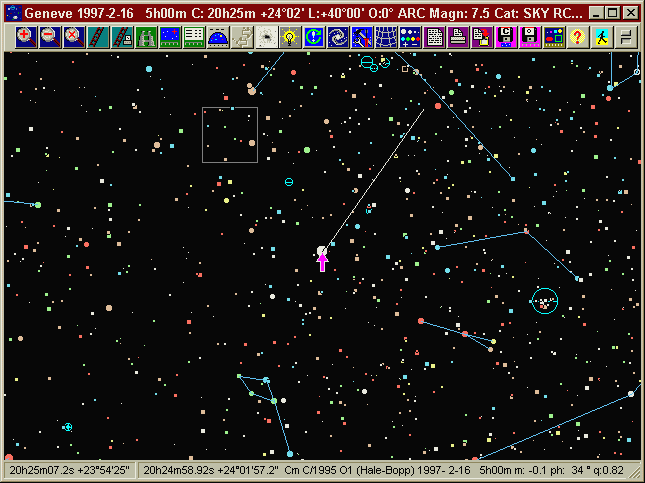
Click on image for full resolution
Press "Alt" key then click on the comet. We obtain the following screen instead of the status bar information. It shows the comets azimuth and elevation position,and rise, transit and set times
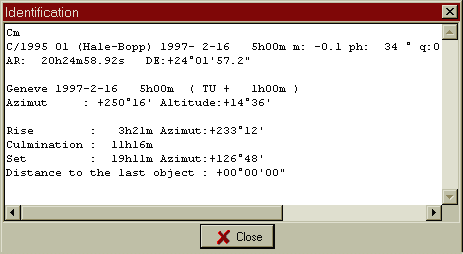
You can change some display variables such as coordinate grids, or zoom the comet nucleus for example.
-
Click "Display the grids"
 .
. - Click and hold down the right mouse button to draw a small rectangle around the comet nucleus. Then confirm your selection by a click in the rectangle.
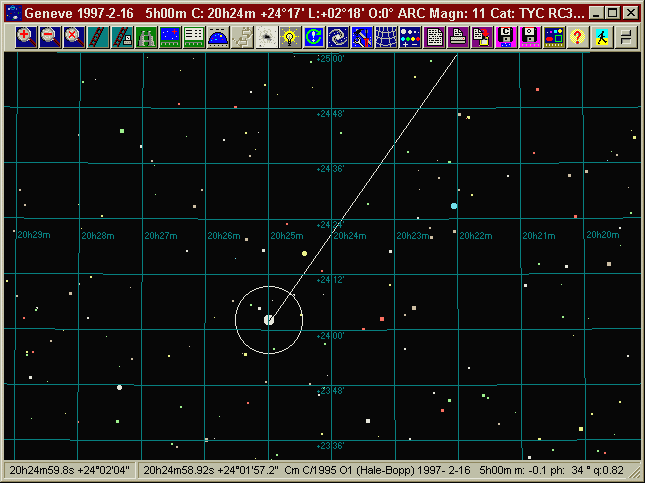
Click on image for full resolution
The central dot corresponds to the comets total magnitude, and the circle indicates the coma diameter.
The line corresponding to the tail shows the anti solar direction. This corresponds to the plasma tail direction near the nucleus and gives sufficient precision up to some ten's of degrees from the nucleus.
The tail length and coma diameter cannot be accurately predicated and the value show on the chart are calculated using a personal cooking recipe that uses magnitude parameters from the ephemeris and the comets orientation relative to Earth. The results are encouraging for all the comets that I have to show. If you know of a more serious work on this subject I would be very interested in further details.
To obtain information for a longer period you can use the Calendar function.
We obtain the position, magnitude, Sun elongation, phase (the angle between the tail and Earth), rise, culmination and set time for our observation place.Click "Calendar" then "Comets" page.
- Enter date from : February 1 1997
- Date to : April 30 1997
- Default time is 0h UT on each day.
- Enter the number of days between calculation : 7 days.
- Select "C/1995 O1 (Hale-Bopp)(1997 elements)" from comet list.
- Click "OK".
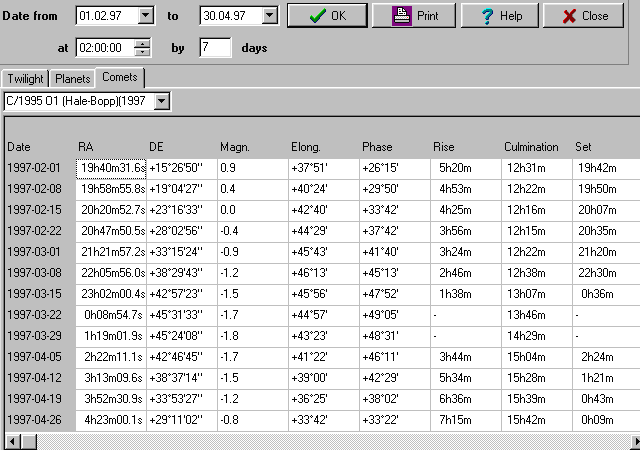
Click on image for full resolution
The right part of the window show the position of the comet at the twilight
time.
The first number is the elevation above horizon and the second the
azimuth in "astronomical" notation 0°=South.
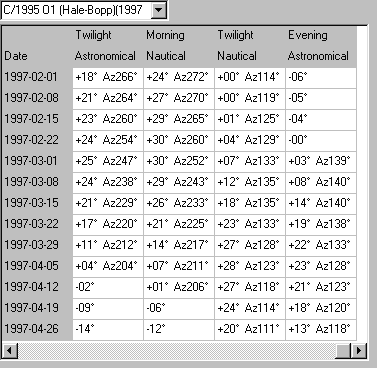
It is easy to show that the comet was only visible on the morning until
end of February. Then it is better on the morning begining of March and
on the evening end of March. Finally it is visible only on the evening
after first week of April.